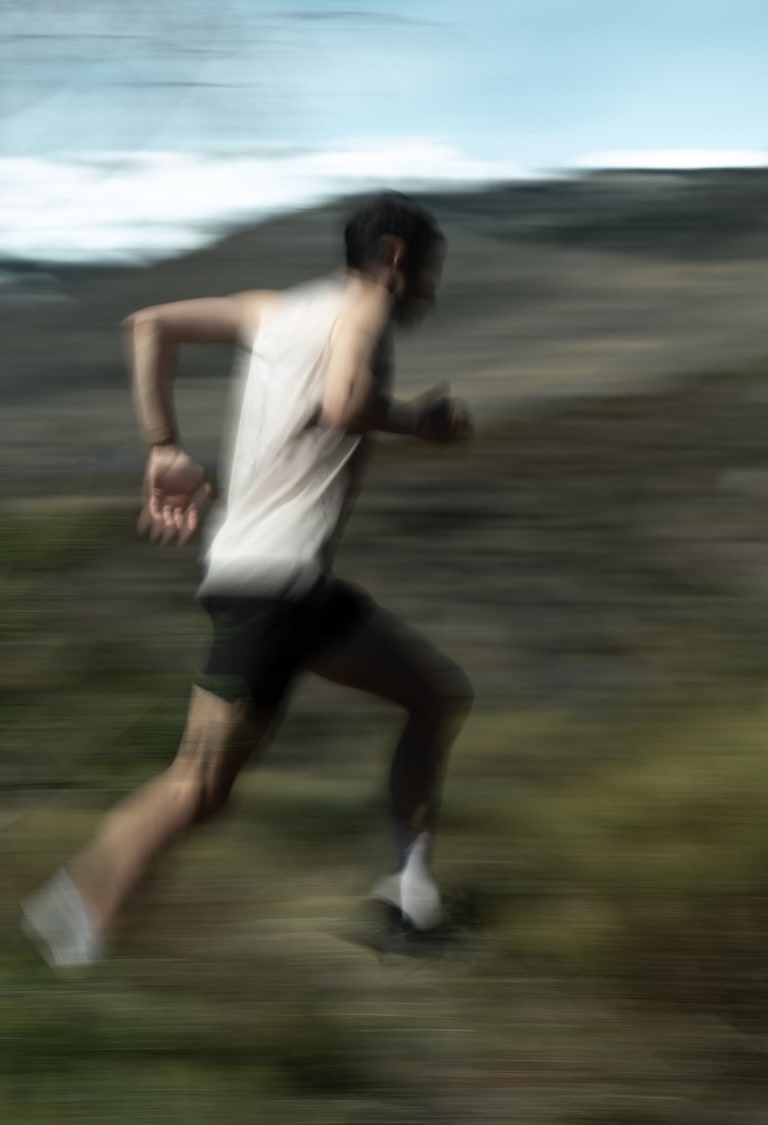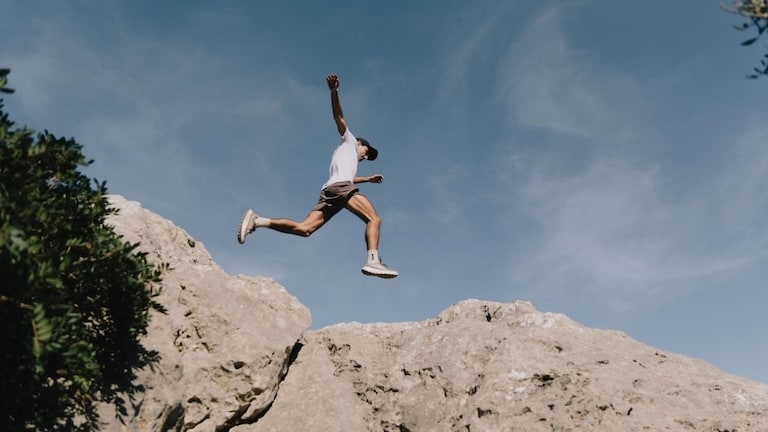
10 tips to improve your trail running training plan

Amb el suport de Elhousine Elazzaoui
Entering the world of trail running not only requires endurance and physical dexterity, to do it at the highest possible level it is essential to design a specific training plan that strengthens our body to the limit, reducing the risk of injury and ensuring proper muscle recovery. In the following article, at NNormal we want to discover 10 tips to improve your trail running training plan to become a better mountain runner and enjoy trail running to your full potential.
What is a trail running training plan?
Trail running training combines physical and mental endurance with a connection to nature, so every session, every run and every moment in the mountains can be a new adventure that challenges new limits.
This is why, in order to get the most out of this sport, it is very important to emphasise and reinforce key aspects such as cardiovascular endurance, muscular strength, technique and mental preparation. An effective training plan is tailored to the individual needs of the runner, taking into account factors such as current fitness level, specific goals and proximity to the race.

How to improve your trail running training plan?
The following tips focus mainly on the type of content to include in your plan and, above all, the way in which we distribute the workload and the intensity of the sessions, to ensure the best possible muscle recovery during the week. Are you ready? Here we go!
1. Apply the CACO method:
The CACO method, which consists of alternating periods of walking and running, should be an essential workout within our training plan. Not only because there are specific times when the steep incline prevents us from running, but also because it is one of the most effective methods for dealing with low intensity runs in nature. The CACO sessions, applicable to all distances, offer a remarkable approach, even for short sessions.
2. Don't underestimate high intensity:
Many people think that because you run at a slower pace in the mountains, your training should be limited to running at lower intensities, but that's not entirely true.
If you train at a higher intensity, it will help us to improve our physiological thresholds, which will allow us to be more "green" when we run at lower intensities, and spend less energy doing so. These exercises can be done in a variety of ways, including sets, tempo changes or hills. Finding our limit when we train will help us to improve our performance and tolerance to effort.
3. Sessions with positive slopes:
Running in the mountains will ensure that we face a multitude of positive slopes that can put us to the test at all times. Getting your body used to overcoming this type of terrain will be essential for this sport, both in terms of tolerance to effort and technique.
Depending on what our goal is within the competition, we can alternate the level of intensity of the session, we can even do it walking, always depending on the type of race we will face in the future.
4. Train for descents:
As they are easier than ascents, we often skip practising descents, but they should be trained specifically for two reasons in particular. Firstly, because the type of muscle work is very specific and different from that of ascents, which can lead to greater muscle fatigue and, sometimes, the presence of stiffness in our muscles.
Secondly, because the instability of the terrain we are training on requires certain types of skills and proper descent techniques. Our joints, such as our ankles and knees, must get used to descents to avoid the risk of injury as much as possible, and this, too, is trained session after session.
5. Running sessions on asphalt:
We know that trail runners are not particularly fond of training on asphalt, roads or running tracks, but including sessions in our training plan will have a number of benefits. Firstly, we will be able to keep the daily session scheduled in case we can't go to the mountains or due to the weather. Secondly, running on asphalt will get us used to doing so at higher paces, without requiring more cardiovascular work. And thirdly, it will allow us to maximise our improvements by running longer at limiting intensities.

6. Include strength in your training plan:
Although the very action of mountain running, especially when ascending, involves the application of significant levels of strength, it cannot be categorised as specific strength workouts. Trail running demands discipline-specific preparation, and this is achieved through certain approaches, such as strength training with additional resistance or the inclusion of plyometrics (jumping exercises).
Incorporating strength workout sessions with resistance, either in the gym environment or at home, will provide a wide range of benefits when running in the mountains. This approach will not only increase our efficiency of effort, but will also act as a preventative measure against potential injury.
7. Manage your nutrition and hydration:
Normally, trail running training sessions or competitions tend to last longer than conventional practices. For this reason, you should manage your nutrition and hydration during your sessions to be able to adapt them better for the competition.
Nowadays, there are a multitude of accessories that will help us during our training sessions or competitions, we are talking about hydration vests or belts, which will give us a hand to carry drinks or food to give us the energy we need at all times.
8. Use specific equipment:
Another key tip to improve your trail running training plan is to use the same clothing and accessories in our training sessions that we will use in competition. It is very important to get our body used to these conditions, so that during the competition we will have fewer unforeseen problems due to the material. It is advisable to set weekly training sessions in which we will use the same clothes as in the competition and the same trail running shoes. Depending on the preferences of each person, the type of terrain, or the weather conditions in which we are going to train and compete.
9. Change the location where you train:
If you are one of those runners who always train along the same familiar paths, we at NNormal recommend that you change your route from time to time, as trying out other places can help you when you face different competitions, where you will not know the way.
In this way, the uncertainty of not knowing the right path will not stop us, and it will also teach us how to act in case we deviate from the marked route.
10. Work your mind:
Last but not least, let's talk about the importance of working your mind to be able to compete in these disciplines. Effectively managing emotions and thoughts over long hours of exertion becomes one of the most important challenges in middle and long distance competitions, not to mention its impact on runners venturing into ultra-distance races. It is therefore imperative that our preparation strategy is also able to take us beyond our comfort zone, incorporating sessions where fatigue is present or where a mental rather than physical approach is sought.
Now that you've learned about the most effective 10 tips to improve your trail running training plan, it's time to put them into practice in your sessions. We can't guarantee that you'll win any race, but you'll definitely enjoy yourself and get the most out of it.

Fotografia: Nick Danielson
Comparteix